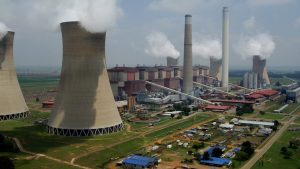Communities working together to create renewable energy seems to be the best way to overcome the current energy crisis in South Africa. This emerged during a business meeting in George in the Western Cape to discuss possible electricity solutions.
Former Head of Eskom in the Western Cape, Alwie Lester, also gave his input on how the province is approaching the energy crisis.
Aged infrastructure, a loss of skills, maladministration and corruption are some of the contributing factors to the energy crisis, and subsequent load shedding in the country. The Western Cape government, however, hopes through partnerships with independent power providers, it will lessen the province’s dependence on Eskom in the coming years.
“So, our plan goes to 2035 and we say by 2035 we should see about 5700 megawatts of own generation outside of the Eskom system, but these will ramp up over the next three to five years. So, we have a target for 750 mw by 2025, then 1500 mw by 2030 and 5700 by 2035,” says Lester.
The Garden Route District Municipality also wants to expand its renewable energy projects. It currently has a solar plant powering its head office and one of its resorts.
“That is serving us quite a lot in terms of our electricity consumption in our own properties, our own buildings. So, we’ve done a 45 KW power plant at De Hoek resort with storage of 160 KW power and that project has reduced our consumption from the grid by 90 percent,” says head of projects and properties in the Garden Route District Municipality, Passmore Dongi.
But it seems the real solution lies with the private sector and communities themselves. A Free State-based company, Rural Maintenance, has since 2012 taken over the management of electricity at the Mafube Municipality.
In cooperation with the local communities and farmers, they have been able to establish solar farms at Frankfort and Tweeling.
“If they see the sun is shining, they see there’s no load shedding in the daytime. It’s fabulous to see how the community have learned, cooperated and we actually have a sustainable solution that’s not damaging Eskom, not posing any threat to our national grid and where now we as grassroots people actually can look after each other,” says Chris Bosch, CEO: Rural maintenance.
The company has also taken control of the area’s load-shedding schedule. When solar energy exceeds the demand, it spares households from load shedding during the day.
Eskom has however threatened to take back control of the schedule and wants the company to only use the solar units during load shedding.






